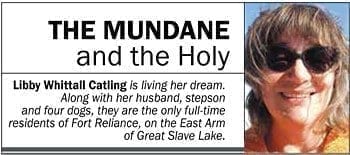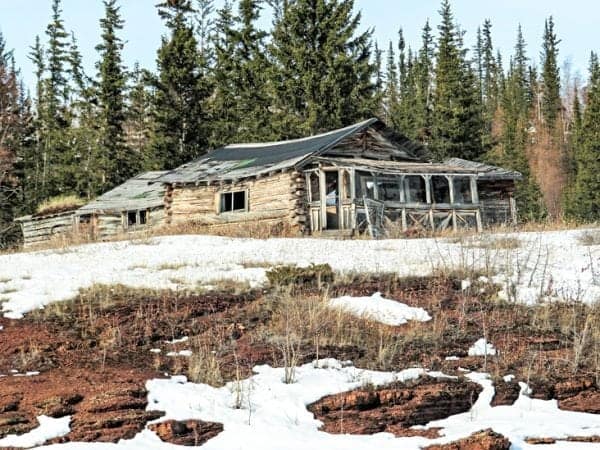Life being the strange thing it is, I took my Grade nine at Monkmoor School for Girls in Shrewsbury, Shropshire, England. The building is a beautiful Tudor black and white timbered structure made up of two large court yards surrounded by gardens.
Coming from egalitarian Newfoundland, transitioning to the social class system of England was confusing. Continually being reprimanded by my teachers for imperfect manners often brought me to tears. I frequently skipped class to hide in a remote corner garden and silently watch the rain, bees and flowers, imagining others who had visited this hidden spot and why they too had been hiding. Leaning my head against the old dark timbers, I felt the solid old building comfort me.
 During those days in England, my mother took us four kids on weekend trips to experience the culture. We traveled by bus all around Wales, eating Cornish pasties and sucking on renowned Welsh rock candy, ticking off in the guide books each fantastic castle we saw. Climbing worn stone staircases, pretending to be ladies in waiting or bows-men, in our childish naivety we declared at each castle that our grandpa had built it!
During those days in England, my mother took us four kids on weekend trips to experience the culture. We traveled by bus all around Wales, eating Cornish pasties and sucking on renowned Welsh rock candy, ticking off in the guide books each fantastic castle we saw. Climbing worn stone staircases, pretending to be ladies in waiting or bows-men, in our childish naivety we declared at each castle that our grandpa had built it!
My grandfather Whittall belonged to an ancient builder’s guild which had been in Shrewsbury for over a thousand years. One time under the floor of an old church he was restoring, he discovered a 1,600 year old Roman tomb and floor intact. I inherited my love and respect for the craft of building from him. In Shrewsbury Abby, I traced my fingers along the faces of the ancient stone effigies lying upon their crypts. Touching the ancient carved stones I felt a deep sense of connection to my ancestors. Gazing up to the stone rafters floating far above, I wondered which of their gnarled hands created such wonders to house other of my ancestor’s bones. It was in Shrewsbury I came to realize that historical buildings deeply connect us to ourselves.

These days, on our almost-daily winter walks, we usually pass the faded grey Wolverine Trading Post built by old Gus D’Aoust in 1930. It is such a picturesque group of cabins, built in the old-timey folk fashion. The field of grass and gooseberries surrounding the buildings was where old Gus kept the trappers sled dogs in the summer for $5 per dog per month. The trading post itself still has some remnants from the days when it was a general store, but the roof is starting to cave in and we suspect the decrepit front porch is a porcupines den. The old log outhouse is still somewhat serviceable for traveler’s emergencies.
Peeking inside the faded spruce log cabins, the roughness of the architecture is obvious, one big room built from small logs, chinked with rope, low ceilings for warmth and small windows because of the difficulty of obtaining window glass, the screen porch offering protection from the hordes of biting insects. Carefully stepping over holes in the floor, I stand at the front counter where a row of shoes I organized several years back still sits. It is easy to imagine people standing here haggling with the old fur trader himself. Touching the walls, I think about the D’Aoust brother’s axe hewing the logs during the short ferocious Northern summer. This was once very important infrastructure out here on the East Arm of Great Slave Lake. It is almost all that is left from a nearly forgotten era when a well-stocked trading post here meant life or death during times of starvation when the caribou didn’t come.
It’s been seven years since I came to Reliance and never have I heard of any real interest in preserving this wonderful piece of Canadiana. Around the enlightened world, there is a great movement to preserve architectural heritage. Many mistakes were made during the 1900’s allowing or even encouraging the destruction of historical buildings to make room for a new and modern future. But in that great rush towards modernity we lost much more than just buildings, we lost our languages, cultures, stories and memories. Restored historical buildings are an important part of our story. There is great interest in heritage preservation projects, and though I know the GNWT is pretty much broke financially most of the time and has serious issues to deal with that far outweigh the saving of a few old cabins, there are individuals around the world to whom the preservation of Northern Canadian heritage is a very important subject. I hope they read this and become aware of the critical situation of this important historic site. Remember, doing nothing and letting our history disappear into the ground is also a decision.